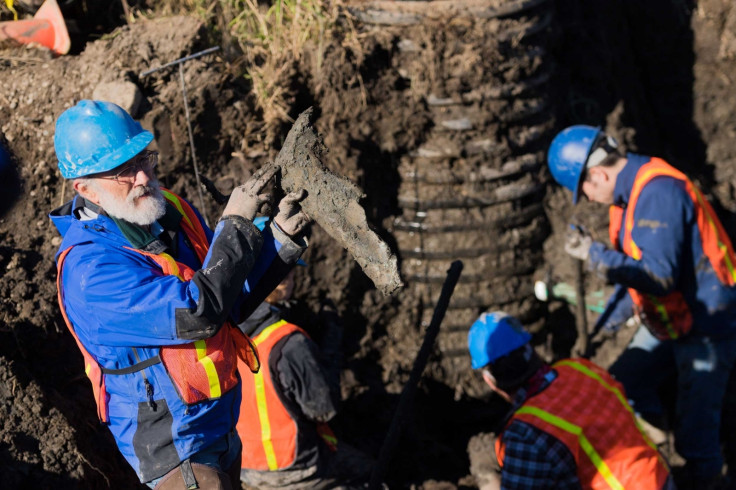Ice Age mammoth was butchered and its meat stored in prehistoric refrigerator by early humans
Palaeontologists believe the meat was preserved in a pond to secure it from other animals.
A study of the skeleton of a large Ice Age mammoth suggests that it was butchered by early humans. Two years after a farmer in Michigan discovered the bones of the now-extinct species, palaeontologists from the University of Michigan surmised that primitive folk preserved the meat of the animal for future consumption.
During an excavation at the site in November, researchers unearthed various other bones of the mammoth. On testing the sediment covering the remains, they discovered the area the animal was found in was an ancient pond. The team also found three curiously placed boulders the size of footballs, suggesting human intervention.
Daniel Fisher, the palaeontologist who led the dig, believes that the animal may have been cut up by humans and its meat stored in the pond, with the boulders to weigh it down and keep other animals from scavenging for it.
According to him, the pond acts as a Mesolithic refrigerator of sorts, with bacteria helping to preserve the meat for longer. Fisher also tested the theory with various types of meat and claims he never felt sick after consuming it. "It actually works much better than you might think," he told Newsweek.
The research team was able to date the bones at over 15,000 years old, and speculate that the mammoth was in its mid-40s when it died. However, there is no indication of whether it was killed by the humans or they found its carcass and decided to use the meat.
"This wasn't the first time they'd taken apart these animals," Fisher explained. "They didn't just sort of wantonly bash it all up, they were interested in effective use of affected materials, as any other knowledgeable butcher would be."
He believes the humans used tools to break down the skull of the animal. "The bone all around there has been basically broken loose — wack wack wack wack!— in a series of strikes," he added.
Fisher is yet to publish the findings in a peer-reviewed journal but is currently studying the bones in more detail to determine the cause of death of the mammoth.

Following the primary excavation in 2015, during which skull, tusks and dozens of intact bones of the Ice Age creature were unearthed, the team revisited the site where they found 40 additional bones and bone fragments.
"I'm confident that as a result of this second excavation, we'll have more insight into what happened here," Fisher added.
The Bristle mammoth
- The first mammoth bones were discovered while farmer James Bristle was installing a drainage system at a low spot in one of his fields.
- During the first dig in 2015, 55 to 60 nearly complete mammoth bones were found, accounting for 30 to 40% of the animal's skeletal mass. The animal was a male in its mid-40s and would have weighed about 9 tons (9,000 kgs).
- Along with the skull, teeth and tusks, most of the vertebrae and ribs were found, along with parts of the shoulder blades and the pelvis.
- Most recently, the excavation team were able to find 40 more bones and bone fragments, including several vertebrae, skull fragments, an intact rib, part of a shoulder blade, a piece of the pelvis, and what appears to be part of the mandible.






















